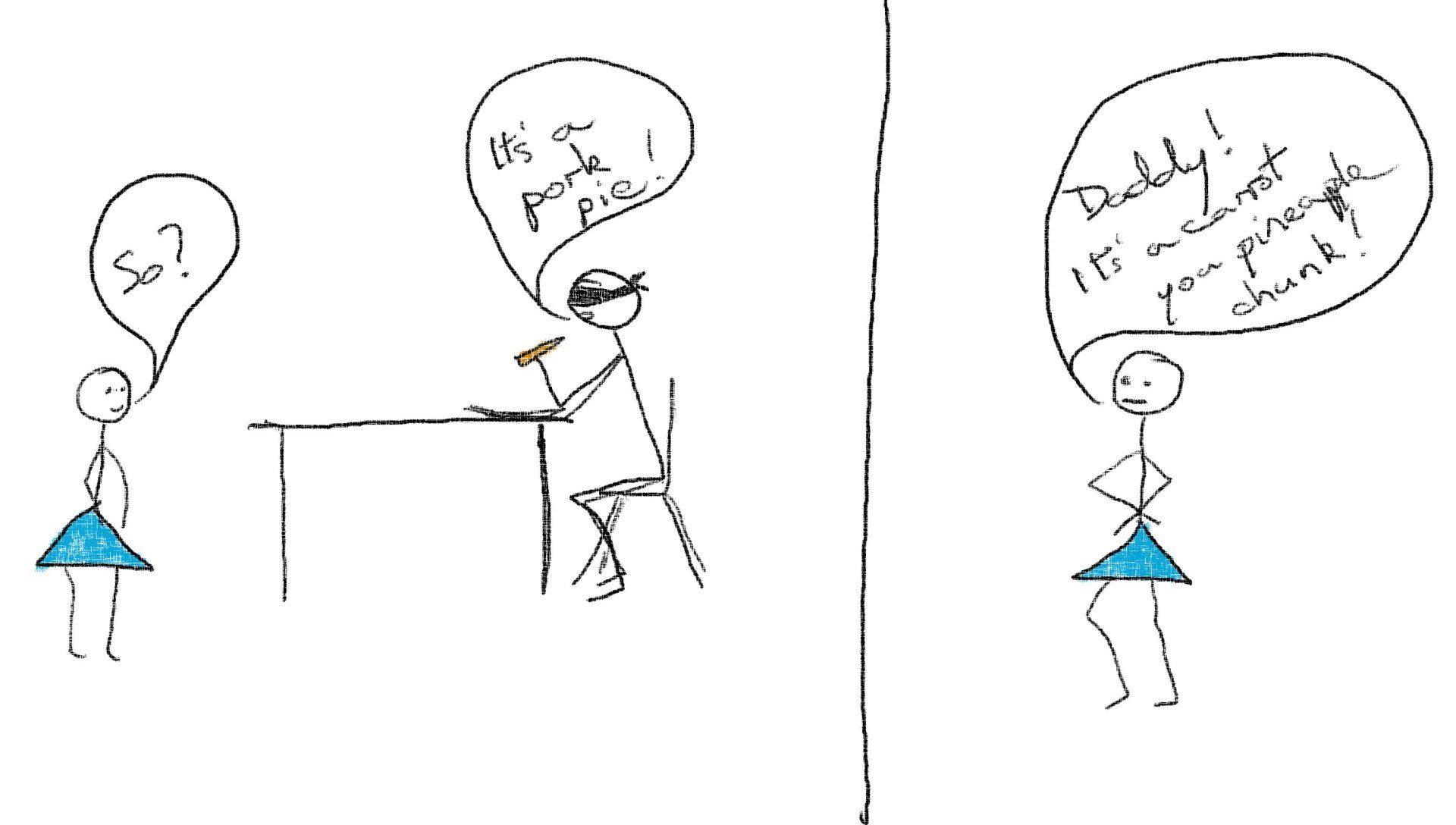
Are You...
Making Mealtimes A Battleground?
What Children Need To Learn About Food
It's Just Food, Isn't It?

Deciphering the world of food is a complex challenge. So, just what is it our children have to learn and how can we assist them?
Before understanding how to support our children in their discovery of food, it is worth reflecting on what it is they need to learn.
Imagine the amount of learning that must go into being able to tell one type of food from another. The visual processing alone is immense, even before you take account of all the natural variations children have to become accustomed to. Then, adding in all the different cooking and presentation options just ramps up the difficulty even more.
Now imagine what it must be like when you put it on a plate, mix it with other things and smother it with gravy.... try and decipher that, my little one.
To make it more difficult the different smells are all mingled together and finally, if and when something reaches our mouths, the most overlooked part of all, not the taste, but the feel of it in our mouth. For, in reality....
All tasting is blind tasting.
It is a biological fact that once a piece of food goes past our lips we can no longer see it. Once it is in our mouths working out what it is and what to do with it is entirely down to feel and, to a lesser extent, taste.
Our tongue obviously plays a big part, but every part of the mouth is involved in trying to decipher what is there and what to do with it.
Chew it? Swallow it? Suck it? Spit it out?
Do we recognise it? Is it what we were expecting? Do we know how to process it? Do we like it? Does it feel safe?
Taking the size and nature of the challenge into account helps us to see why young children behave the way they do.
It should be no surprise that our young children generally prefer:
- things to be kept separate
- things with simple uniform textures
- things prepared and presented the same way every time
- things without variations and blemishes
- things without bits in, especially hidden bits (what I call flavour or texture bombs)
In nature sweet things and fatty things are rarely poisonous.
If we add in to the picture an understanding that animal products and sweet things are rarely, if ever, poisonous and therefore are inherently safe, it doesn't take much of a leap to see why young children eat the way they do:
- Uniform
- Predictable in appearance and texture
- Sweet
- Fatty
- Sweet, fatty, uniform and predictable in appearance and texture...!! YES PLEASE!
To understand that something green, leafy, variable in appearance and texture, slightly bitter and rarely seen at snack time, might be a) safe and b) enjoyable to eat is a massive learning curve.
Luckily, given the chance, this is the type of learning our brains are good at. Complex pattern recognition is essential in so many aspects of life and this is an important one.
One thing you can be sure of is that this learning doesn't happen through the ears, which are, in general, a very unreliable way to a young child's brain.
It always amazes me when I see parents busy trying to explain to a 2 or 3 year old how to behave. The poor child is hardly able to decipher the stream of words let alone understand the implication of them to their behaviour. And, I suspect, even if they did, they wouldn't care less. Young children do not learn by being told anything!
So, unfortunately we can't put something in front of a young child and explain to them that it's delicious and nutritious with any expectation that it will encourage them to want to try some.
Young children learn through four primary routes:
- example
- experimentation
- positive attention
- repetition
Put these four things together and their brains will gradually reinforce the synaptic links required to make sense of the complex world of food.
What this means for us as we try to help them along the way is...
- keep it separate
- keep it simple
- repeat it often
- allow them to 'experiment' with it
- show them by example
Simple.
Remember, young children do not refuse to eat things just to wind us up!
Unless we teach them to do so.
Created 07/06/2019
Last Updated 12/06/2019

